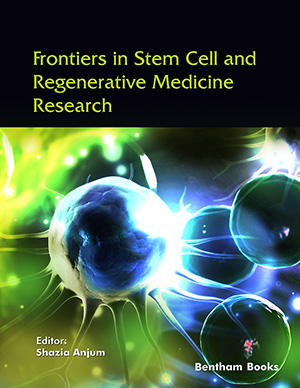
Abstract
Background: Very low birth weight infants are at risk of developing periventricular white matter lesions. We previously reported high blood adenosine levels in premature infants and infants with low birth weight. We asked whether blood adenosine levels could be related to the vulnerability of the maturing white matter to develop lesions. The present study aims at finding a biomarker for the early detection of brain white matter lesions that can profoundly influence the neurodevelopmental outcome, whose pathophysiology is still unclear.
Methods: Dried blood spots were prospectively collected for the newborn screening program and adenosine concentration measurements. Fifty-six newborns who tested four times for blood adenosine concentration (at days 3, 15, 30, and 40 post-birth) were included in the program. All infants underwent brain MRI at term equivalent age. Neurodevelopmental outcomes were studied with Griffiths Mental Development Scales (GMDS) at 12 ± 2 months corrected age.
Results: Blood adenosine concentration increased over time from a median of 0.75 μM at Day 3 to 1.46 μM at Day 40. Adenosine blood concentration >1.58 μM at Day 15 was significantly associated with brain white matter lesions at MRI (OR (95 % CI) of 50.0 (3.6-688.3), p-value < 0.001). A moderate negative correlation between adenosine at 15 days of life and GMDS at 12 ± 2 months corrected age was found.
Conclusion: These findings suggest a potential role for blood adenosine concentration as a biomarker of creberal white matter lesions in very low birth weight infants.
Keywords: Adenosine, biomarker, brain injury, brain MRI, periventricular white matter lesions, prematurity, very low weight at birth.
[http://dx.doi.org/10.1002/ijgo.13195] [PMID: 32524596]
[http://dx.doi.org/10.1007/s00234-010-0700-y] [PMID: 20422407]
[http://dx.doi.org/10.1038/pr.2013.188] [PMID: 24336433]
[http://dx.doi.org/10.3109/14767058.2013.796166] [PMID: 23968292]
[http://dx.doi.org/10.1038/s41390-020-0780-2] [PMID: 32218535]
[http://dx.doi.org/10.1055/s-0036-1587595] [PMID: 27552027]
[http://dx.doi.org/10.3109/14767058.2013.1031952] [PMID: 26365359]
[http://dx.doi.org/10.1136/archdischild-2017-312710] [PMID: 28588126]
[http://dx.doi.org/10.1016/j.jpeds.2004.05.042] [PMID: 15520756]
[http://dx.doi.org/10.1161/STROKEAHA.110.590455] [PMID: 21597013]
[http://dx.doi.org/10.1136/archdischild-2014-307176] [PMID: 25637005]
[http://dx.doi.org/10.3109/14767058.2013.796162] [PMID: 23968243]
[http://dx.doi.org/10.1007/s00330-017-5060-0] [PMID: 28956133]
[http://dx.doi.org/10.1002/jmri.26163] [PMID: 29746715]
[http://dx.doi.org/10.1007/s12311-019-01053-1] [PMID: 31250213]
[http://dx.doi.org/10.3389/fphys.2016.00330] [PMID: 27536248]
[http://dx.doi.org/10.1212/WNL.0000000000003606] [PMID: 28100727]
[http://dx.doi.org/10.1016/j.neulet.2019.134539] [PMID: 31614181]
[http://dx.doi.org/10.1055/s-0035-1554102] [PMID: 26121069]
[http://dx.doi.org/10.4414/smw.2014.14014] [PMID: 25255015]
[http://dx.doi.org/10.1155/2014/358375] [PMID: 25202436]
[http://dx.doi.org/10.1053/j.semperi.2004.10.010] [PMID: 15693397]
[http://dx.doi.org/10.1136/fn.86.3.f171] [PMID: 11978747]
[http://dx.doi.org/10.1203/PDR.0b013e3182182836] [PMID: 21386750]
[http://dx.doi.org/10.1038/s41598-017-13753-x] [PMID: 29038505]
[http://dx.doi.org/10.1016/j.jpeds.2016.11.073] [PMID: 28063691]
[http://dx.doi.org/10.1016/j.neuroscience.2014.04.038] [PMID: 24838063]
[http://dx.doi.org/10.3109/14767058.2013.796170] [PMID: 23968388]
[http://dx.doi.org/10.1016/j.clp.2015.04.011] [PMID: 26250915]
[http://dx.doi.org/10.1016/j.ejpn.2019.06.003] [PMID: 31307922]
[http://dx.doi.org/10.1016/j.freeradbiomed.2019.03.034] [PMID: 30954545]
[http://dx.doi.org/10.1016/j.siny.2020.101087] [PMID: 32008959]
[http://dx.doi.org/10.1096/fj.201900738RR] [PMID: 32162735]
[http://dx.doi.org/10.1016/j.mehy.2016.03.007] [PMID: 27063086]
[http://dx.doi.org/10.3892/br.2018.1083] [PMID: 29732147]
[http://dx.doi.org/10.1016/s0896-6273(02)01067-x] [PMID: 12467589]
[http://dx.doi.org/10.1203/PDR.0b013e31820efbcf] [PMID: 21228731]
[http://dx.doi.org/10.1038/nrc3613] [PMID: 24226193]
[http://dx.doi.org/10.1159/000047088] [PMID: 11275648]
[http://dx.doi.org/10.1177/0883073809337920] [PMID: 19605776]
[http://dx.doi.org/10.1016/j.jaci.2011.03.040] [PMID: 21624616]
[http://dx.doi.org/10.1016/j.jpba.2014.03.047] [PMID: 24844843]
[http://dx.doi.org/10.3389/fneur.2018.00605] [PMID: 30254599]
[http://dx.doi.org/10.1055/s-2007-973511] [PMID: 10706026]
[http://dx.doi.org/10.1016/j.earlhumdev.2017.01.001] [PMID: 28107673]
[http://dx.doi.org/10.1021/acs.jproteome.7b00741] [PMID: 29299929]
[http://dx.doi.org/10.1016/S0005-2736(03)00210-4] [PMID: 12948585]
[http://dx.doi.org/10.1038/sj.cdd.4402132] [PMID: 17396131]
[http://dx.doi.org/10.1007/s00424-003-1103-2] [PMID: 12838422]
[http://dx.doi.org/10.1074/jbc.M113.484212] [PMID: 23897810]
[http://dx.doi.org/10.1002/prp2.189] [PMID: 27022463]
[http://dx.doi.org/10.1111/jnc.13724] [PMID: 27365148]
[http://dx.doi.org/10.1002/glia.22658] [PMID: 24687630]
[http://dx.doi.org/10.3389/fped.2018.00369] [PMID: 30555809]
[http://dx.doi.org/10.3109/14767058.2010.509940] [PMID: 20807155]
[http://dx.doi.org/10.1016/j.tins.2008.11.003] [PMID: 19135728]
[http://dx.doi.org/10.1038/nrneurol.2015.13] [PMID: 25686754]
[http://dx.doi.org/10.1016/j.ijdevneu.2011.02.012] [PMID: 21382469]
[http://dx.doi.org/10.1136/adc.61.3.298] [PMID: 3516079]
[http://dx.doi.org/10.1136/adc.2006.108837] [PMID: 18296574]
[http://dx.doi.org/10.1523/JNEUROSCI.21-04-01302.2001] [PMID: 11160401]
[http://dx.doi.org/10.1002/ana.24132] [PMID: 24615937]
[http://dx.doi.org/10.1002/ana.22533] [PMID: 22028217]
[http://dx.doi.org/10.3109/10715762.2015.1050962] [PMID: 25971447]
[http://dx.doi.org/10.1111/jnc.12253] [PMID: 23578247]
[http://dx.doi.org/10.1007/s12035-015-9575-6] [PMID: 26676569]
[http://dx.doi.org/10.1126/scisignal.3104re1] [PMID: 20068232]
[http://dx.doi.org/10.1016/j.pediatrneurol.2007.08.019] [PMID: 18054686]
[http://dx.doi.org/10.1007/s00381-006-0050-6] [PMID: 16636880]
[http://dx.doi.org/10.1096/fba.2019-00093] [PMID: 32395704]
[http://dx.doi.org/10.1007/s12035-015-9216-0] [PMID: 26033217]
[http://dx.doi.org/10.1016/j.freeradbiomed.2018.01.029] [PMID: 29378336]
[http://dx.doi.org/10.1002/mrdd.20107] [PMID: 16807910]
[http://dx.doi.org/10.1016/j.clnu.2016.09.033] [PMID: 27756480]
[http://dx.doi.org/10.1016/J.EJOGRB.2015.11.033] [PMID: 26773247]
[http://dx.doi.org/10.1016/J.JNS.2013.05.010] [PMID: 23735777]
[http://dx.doi.org/10.1016/s0022-3476(99)70237-4] [PMID: 10228286]
[http://dx.doi.org/10.1016/j.nbd.2015.10.012] [PMID: 26477300]
[http://dx.doi.org/10.1093/aje/kww135] [PMID: 28338817]
[PMID: 23002376]
[http://dx.doi.org/10.1016/j.jaci.2014.01.040] [PMID: 24767876]
[http://dx.doi.org/10.1523/JNEUROSCI.3337-11.2011] [PMID: 21917810]
[http://dx.doi.org/10.1152/ajpregu.00171.2018] [PMID: 30230932]
[http://dx.doi.org/10.1016/j.ajog.2013.02.049] [PMID: 23467054]
 54
54 1
1



























